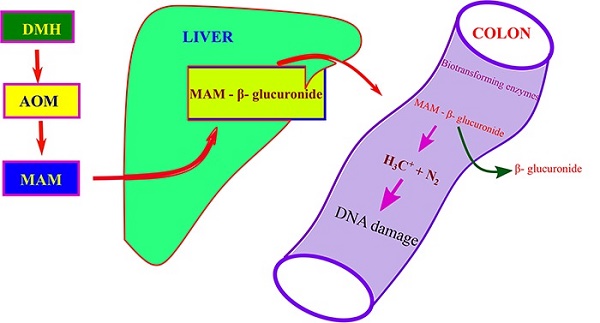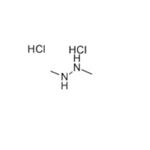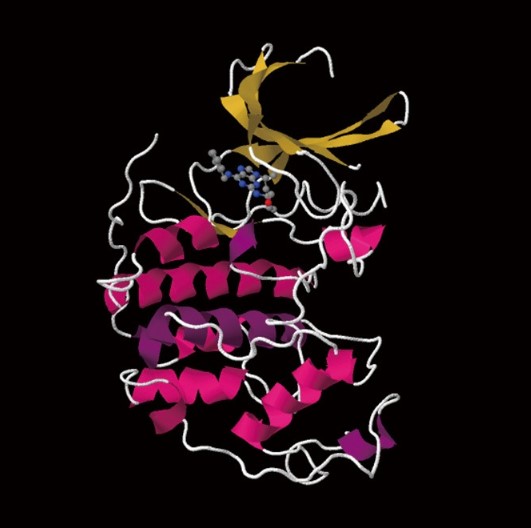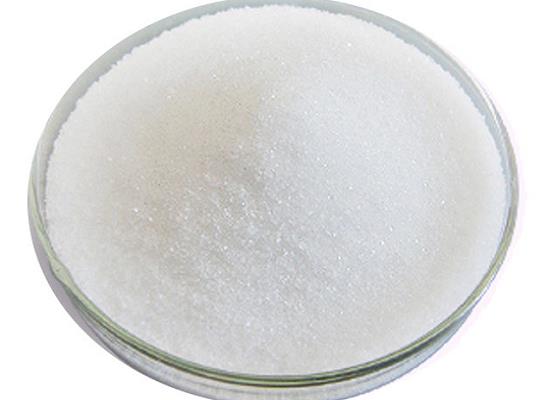The carcinogenicity of 1,2-Dimethylhydrazine Dihydrochloride
Oct 30,2023
Description
1,2-Dimethylhydrazine Dihydrochloride is a white to light yellow powder with the chemical formula C2H10Cl2N2. 1,2-dimethylhydrazine (DMH) is a member in the class of hydrazines, strong DNA alkylating agent, naturally present in cycads. This compound is the chloride salt of a compound used experimentally to induce tumors in animal models of carcinogenesis. In mice and rats, 1,2-dimethylhydrazine may induce carcinogenesis through the deregulation of the cell cycle. Serial injections of the colon carcinogen, 1,2-dimethylhydrazine (DMH), have been reported to increase the proliferative activity in the colonic crypts preceding the development of tumors[1]. This compound is metabolized and activated in the liver.

Carcinogenic potency
Administration of 0.001% 1,2-dimethylhydrazine dihydrochloride, symmetrical, in the drinking water of 7-week-old randomly bred Swiss mice for the remainder of their lifetime induced blood vessel tumors and enhanced the incidence of lung neoplasms. Ninety-eight percent of the females and 92% of the males developed vascular lesions, whereas among the controls the incidence was 3% in the females and 1% in the males. In addition, the incidence of lung tumors rose from 12 to 44% in the females and from 10 to 24% in the males, as compared with the controls. The occurrence of vascular tumors in order of decreasing frequency was as follows: muscle, pararenal, fat, liver, parametrial, para epididymal tissues, etc[2]. Gross, light, and electron microscopic examinations of vascular lesions revealed the characteristic appearance of angiosarcomas.
Application in experiment
In order to investigate how intestinal bacteria affect host cytogenetic alterations in the early initiation step of colon carcinogenesis, Ohyama conducted a comet assay and micronucleus (MN) test using germ-free (GF) and conventionalized (Cvd) rats after a single subcutaneous injection of the carcinogen, 1,2-dimethylhydrazine dihydrochloride[3]. In the Comet assay, animals in the DMH treatment group were subcutaneously administered a single dose of 20 mg/10 mL/kg body weight of DMH. They found that the mean tail lengths increased significantly in the liver and colon of GF and Cvd rats after the DMH treatment. The maximum values were observed at 3 h after the treatment, following which the values tended to decrease in both tissues. The rapid cell proliferation in the colon of rats with bacterial colonization of the intestine causes an acceleration in the production of MNed colonic cells.

References
[1] Sykora I, et al. Postnatal carcinogenic study of 1,2-dimethylhydrazine dihydrochloride in rats. Neoplasma, 1986.
[2] Toth B, et al. Blood vessel tumorigenesis by 1,2-dimethylhydrazine dihydrochloride (symmetrical). Gross, light and electron microscopic descriptions. I. The American Journal of Pathology, 1971.
[3] Ohyama W, Markedly enhanced micronucleus induction by 1,2-dimethylhydrazine dihydrochloride in colonic cells of rats with bacterial colonization in the intestine. Mutation Research/Genetic Toxicology and Environmental Mutagenesis, 2019; 838: 1-8.
- Related articles
- Related Qustion
- Exploring the Dual Nature of 1,2-Dimethylhydrazine Dihydrochloride: Applications and Toxicity in Chemical Synthesis Apr 23, 2024
1,2-Dimethylhydrazine Dihydrochloride is a compound of great importance in chemical synthesis and pharmaceutical development.
Roscovitine is a widely used inhibitor in both basic research and disease research. This drug displays anti-inflammatory properties and analgesic effects.....
Oct 27,2023Biochemical EngineeringD-Glucaric acid, found in fruits and vegetables, has diverse biological functions and potential clinical applications in cancer prevention.....
Oct 31,2023APIYou may like
1,2-Dimethylhydrazine Dihydrochloride manufacturers
- 1,2-DIMETHYLHYDRAZINE DIHYDROCHLORIDE
-

- $0.00 / 1kg
- 2023-12-04
- CAS:306-37-6
- Min. Order: 0.1kg
- Purity: 98%
- Supply Ability: 100kg
- 1,2-DIMETHYLHYDRAZINE DIHYDROCHLORIDE
-

- $1.00 / 1KG
- 2020-01-10
- CAS:306-37-6
- Min. Order: 1KG
- Purity: 98% HPLC
- Supply Ability: 10 tons/month






